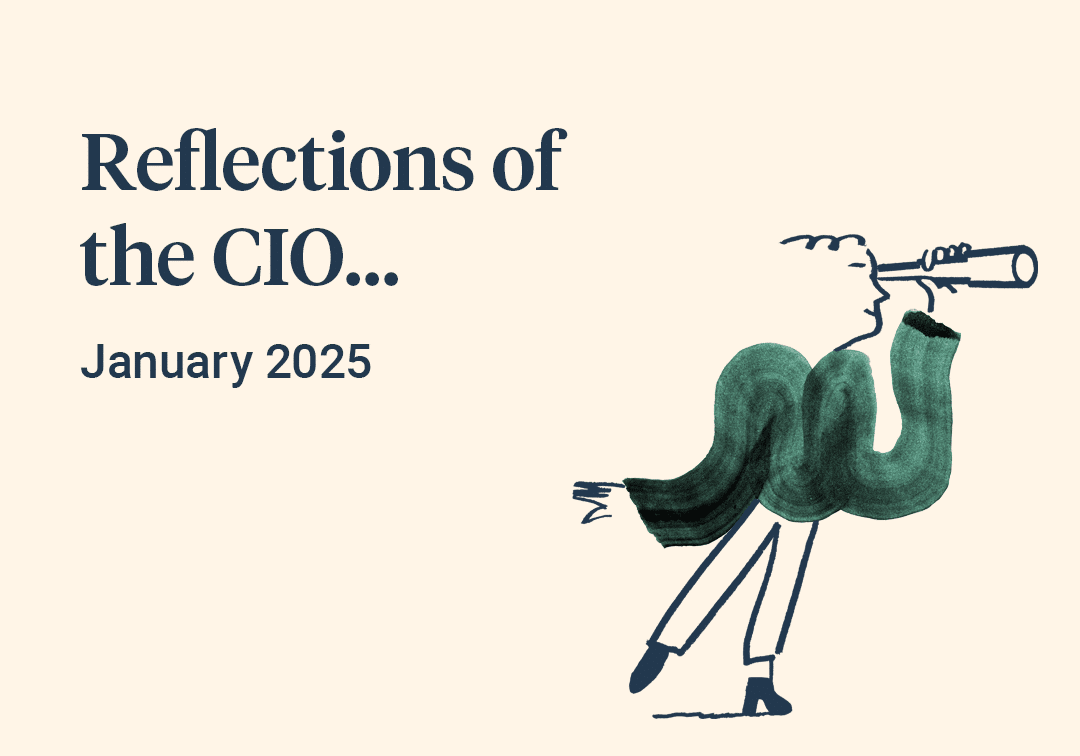September was a tough month for nearly all global assets, with the root cause being a mini panic in government bond markets, particularly in bonds with a longer maturity date. There were multiple reasons for the price falls, many of which are familiar, but this time there was also a faint whiff of panic in the air as those investors who were incorrectly positioned rushed to sell into quarter end.
The negative overtones had been building for a while. Oil prices have been rising steadily from their lows around $70 throughout the summer and in September spiked upwards again into the $95 region. This reignited concerns about the inflation outlook, which had been improving steadily over the last few months. There was also a renewed focus on the spending profile of the US government, which is currently predicted to be running large fiscal deficits for many years into the future. The market already knew this of course, but a warning from the ratings agency Fitch on how this spending profile would pressurise the US debt rating did serve to bring the issue back into focus.
Adding to the pressure on the key US bond market was the ongoing trend of weakening demand, as key overseas buyers of US debt are now inclined to buy much less than they did before. In the case of China and Saudi Arabia, the reasons behind this are mainly geopolitical, for the Japanese it is a question of relative value, given the increasing attractiveness of alternatives at home. These supply and demand risks had not really been factored into the prices of longer-term US debt in any meaningful way until the Federal Reserve meeting in late September provided a catalyst for a rethink.
At this meeting, the Fed updated its estimates for the future path of the US economy, projecting a slightly higher path for growth, inflation, and interest rates than they had previously estimated only three months ago. Although they did not actually raise interest rates at this meeting, they did very clearly outline how interest rates would have to stay higher for longer than the market had originally thought. If inflation did not continue to fall, interest rates would have to rise again. As this message was digested alongside the other issues surrounding debt demand, supply and quality, the key US bond market began to fall sharply, dragging other bond markets down with them. Equity markets also began to fall, as did most currencies when compared to the dollar. The total quantum of loss by month end was of the order of -3% to -4% across assets, with only oil standing out as the most noticeable positive return.
Do you need help managing your investments?
Our team can recommend an investment strategy to meet your financial objectives and give you peace of mind that your investments are in good hands. Get in touch to discuss how we can help you.

The positive mood that solid economic growth has engendered this year to date has now given way to a more sober period, where investors are now wrestling with the implications of ‘higher for longer’ interest rates. These implications are not that easy to read, given multiple plausible future outcomes. It is entirely possible that global central banks, including the US, can bring inflation down without the damaging impact of a deep global recession. Then again, the need to be sure that inflation is cured may force those same central banks into keeping the pressure on for too long, causing real damage to employment and growth.
The implications for financial markets are even trickier given the short-term nature of trading patterns and the complications that valuations, politics, liquidity, and sentiment bring with them. Although September was a rough month for markets, we couldn’t describe it as a full panic. There has been no definitive shake out yet because of the sharp rise in global interest rates which may imply that the pain is just deferred or that the financial system is indeed robust enough to cope with this new world of high debt, high inflation and high interest rates.
We have, in general, tried to err on the side of caution in portfolios and do not see much reason to change that opinion just yet. What we are looking for is a period when bond markets and the long-term interest rates embedded in their prices are much more stable than they are now. That would allow us to be more aggressive in taking advantage of the opportunities we can now see in several geographies and asset classes. We don’t think that period should be too long, perhaps only a few months, but for the moment we continue to think that being cautious and patient remains the best strategy.
Do you need help managing your investments?
Our team can recommend an investment strategy to meet your financial objectives and give you peace of mind that your investments are in good hands. Get in touch to discuss how we can help you.

Article sources
Editorial policy
All authors have considerable industry expertise and specific knowledge on any given topic. All pieces are reviewed by an additional qualified financial specialist to ensure objectivity and accuracy to the best of our ability. All reviewer’s qualifications are from leading industry bodies. Where possible we use primary sources to support our work. These can include white papers, government sources and data, original reports and interviews or articles from other industry experts. We also reference research from other reputable financial planning and investment management firms where appropriate.
The views expressed in this article are those of the Saltus Asset Management team. These typically relate to the core Saltus portfolios. We aim to implement our views across all Saltus strategies, but we must work within each portfolio’s specific objectives and restrictions. This means our views can be implemented more comprehensively in some mandates than others. If your funds are not within a Saltus portfolio and you would like more information, please get in touch with your adviser. Saltus Asset Management is a trading name of Saltus Partners LLP which is authorised and regulated by the Financial Conduct Authority. Information is correct to the best of our understanding as at the date of publication. Nothing within this content is intended as, or can be relied upon, as financial advice. Capital is at risk. You may get back less than you invested. Tax rules may change and the value of tax reliefs depends on your individual circumstances.
Related blog posts
About Saltus?
Find out more about our award-winning wealth management services…
Winner
Investment Performance: Cautious Portfolios
Winner
Top 100 Fund Selectors 2024
Winner
Best Places to Work 2024
Winner
Best Financial Advisers to Work For
£8bn+
assets under advice
20
years working with clients
350+
employees
97%
client retention rate






